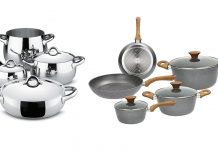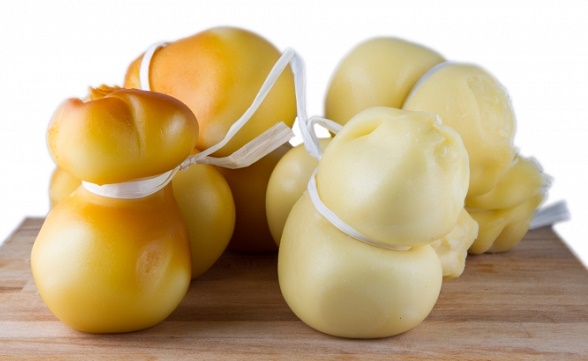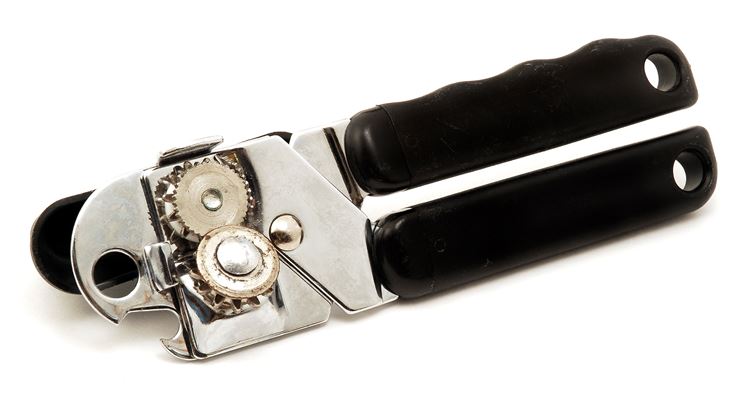
Introduction
The can opener is an instrument used to open boxes or tin cans, containing foodstuffs that do not have the opening tab.
On the market you can find many models, from the classic manual ones, and the most sophisticated electric ones, and moreover there are the counter-top ones used mainly in the professional kitchens of hotels, restaurants and catering companies.
The most known and sold is certainly the manual one, which consists of a blade, or even a toothed and sharpened wheel, able to cut the metal sheet that makes up the covers of cans.
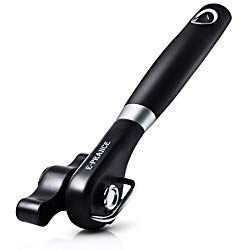 The toothed wheel is placed under the rivet of the lid and with a sort of flap or butterfly, it is turned so that the blade makes force on the lid so much to cut it.
The toothed wheel is placed under the rivet of the lid and with a sort of flap or butterfly, it is turned so that the blade makes force on the lid so much to cut it.
Then there are two other toothed wheels that make up all the gear, which transmits force to the rotating wing, which is turned by whoever is using the can opener allowing the blade to cut the entire lid of the jar along the edge.
Cans: the history of the invention
The first nation to store canned foods was Holland at the end of the eighteenth century, but the very first can opener was patented in England only in 1855, to arrive in the United States just three years later.
Canned foods were already preserved in the Dutch navy and had been a real practice since 1772.
 In the Netherlands before 1800 there were small factories that made canned salmon, but the preservation of these was patented long after by Peter Durand in 1810, and the first openers on the market, arrived about 40 years later.
In the Netherlands before 1800 there were small factories that made canned salmon, but the preservation of these was patented long after by Peter Durand in 1810, and the first openers on the market, arrived about 40 years later.
Boxed food was an innovation that struck mainly in addition to Great Britain, the state of France and starting in 1822, even the United States, appreciated this form of food.
The jars used at that time were very heavy, sometimes even more than the food they contained and required not only a remarkable talent for open beings, but also a not indifferent effort.
The instructions that appeared above these jars of the times cited: to remove the lid, cut the edge at the top in the outer part, using a hammer and chisel.
Can openers: types and history
The first models of can opener were very rudimentary kitchen tools, and began to appear in 1850, but the real revolution took place in 1855 thanks to Robert Yates, who besides being a famous manufacturer of tools for surgery and cutlery, he invented and patent the first and true lever opener, which had a claw shape.
This instrument was a modified knife where the blade was able to cut the can around the edge by the handle with which it was necessary to pry.
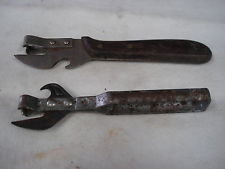 Later in the United States 1858, another very complex can opener appeared, patented by Ezra Warner, which consisted of a very thin blade reminiscent of a sickle, whose tip entered slightly into the box without coming into contact with internal food, also equipped a safe made of metal which in turn was connected to a second blade, which leveraged, first pierced the metal, then cut it.
Later in the United States 1858, another very complex can opener appeared, patented by Ezra Warner, which consisted of a very thin blade reminiscent of a sickle, whose tip entered slightly into the box without coming into contact with internal food, also equipped a safe made of metal which in turn was connected to a second blade, which leveraged, first pierced the metal, then cut it.
This can opener was therefore formed from different parts, which are worn with extreme ease, especially the sickle part.
The US army has used this instrument very much during the civil war, but its blade so sharp and also devoid of any protection, was considered too dangerous especially for domestic use, to such an extent that civilians, before going home with the shopping, they used to ask the shopkeeper to open the cans to avoid doing at home the opening work too dangerous.
Domestic can opener: a history
In 1865, the first can opener was made for domestic use and was sold with the purchase of Bully marinated beef.
This can opener was made entirely of cast iron and its structure was very similar to that of Yates, with the difference in form, certainly much less rudimentary and pious aesthetic in the design.
 Even for this, however, to use it was necessary to have a steady hand and eyes very vigilant, because if for a reason the instrument escaped from the hands, it was impossible not to cut yourself.
Even for this, however, to use it was necessary to have a steady hand and eyes very vigilant, because if for a reason the instrument escaped from the hands, it was impossible not to cut yourself.
The most sophisticated form of can opener for those times, occurred in 1870, and was equipped with a functional wheel able to serrate the entire edge of the lid and in this way to detach it from the jar more easily.
To invent this model was Willam Lyman, and it was a great success, so much so that the company Baumgartner put it into production in 1890.
The only inconvenient thing about this tool was that it had to be placed in the center of the can over the lid, a very inconvenient method that did not make this invention survive until today.

